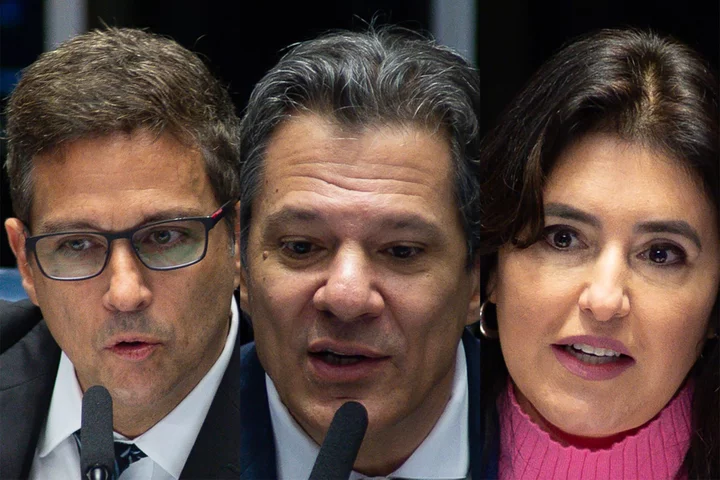Brazil will keep pursuing a 3% inflation target, a decision that is likely to help the central bank launch a cycle of interest rate cuts as soon as August.
Central bank President Roberto Campos Neto, Finance Minister Fernando Haddad and Planning Minister Simone Tebet, who make up the national monetary council, also decided on Thursday to get rid of specific objectives for each calendar year and instead introduce a constant, medium-term inflation goal. Their decision was unanimous.
The Brazilian real extended gains after the announcement, while swap rates fell as traders bet the central bank will be able to ease monetary policy more quickly. The contract maturing in January 2025, which signals expectations for the benchmark Selic at the end of 2024, fell 10 basis points.
The decision “removed uncertainty in the short run, likely lowering inflation expectations,” said Antonio Madeira, an economist with MCM Consultores. “Those are important conditions for rate cuts starting in August.”
What Bloomberg Economics Says
Brazil’s National Monetary Council set a continuous inflation target of 3% — another big win for Finance Minister Fernando Haddad over the left-leaning wing of the government. We expect this will ease concerns of shift in economic policy, prompt a decline in inflation expectations and facilitate an August policy rate cut.
— Adriana Dupita, Brazil and Argentina economist
Click here to read the full report.
Haddad told reporters that the continuous target will be introduced in 2025 and there will be no need to reaffirm the 3% goal each year. A tolerance range of plus or minus 1.5 percentage points remains in effect. The national monetary council decided to maintain the current objective, he added, “in light of the economic indicators, particularly consumer price increases that are slowing markedly and converging toward the target.”
Earlier on Thursday, President Luiz Inacio Lula da Silva repeated his criticism of inflation objectives that he considers too low, saying Brazil “doesn’t need such a rigid goal.” He had previously called for a less strict 4.5% target.
Yet the leftist president gave the economic team carte blanche to make their decision, according to Haddad. While Brazil’s central bank is autonomous, the institution follows targets set by the monetary council, which is dominated by ministers appointed by the president.
Read More: Brazil Central Bank Signals Rate Cut as Lula Piles Pressure
The new rules for the inflation system will be published in a presidential decree, though Haddad didn’t say when. Policymakers will consider a time horizon of 24 months to bring inflation to target, he said. Central bankers currently consider a time horizon of up to 18 months, considering lags for the impact of monetary policy decisions on the economy.
“We expect the market to react positively, and inflation expectations for 2024-26 to improve slightly, though the 24-month relevant horizon to pursue the target is in our assessment excessively long,” said Alberto Ramos, a managing director at Goldman Sachs Group Inc.
Policymakers will keep sending a letter to explain their commitment to pursue the inflation target at least once a year.
--With assistance from Felipe Saturnino.
(Updates with details starting in sixth paragraph. A previous version of this story corrected the day of the week.)

